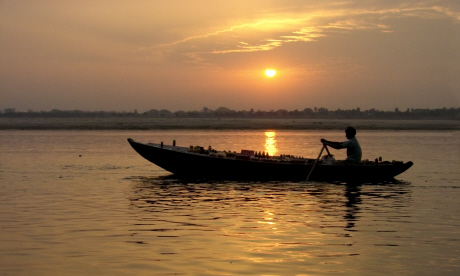
Pictures taken from boats all too often end in repetitive seascapes and wonky horizons. Steve Davey stabilises your waterborne photography
On the face of it, shooting from a ship sounds like an easy ride.
You can be transported from place to place and take your pictures in relative comfort. You don’t have to walk for miles, lugging equipment. You might even be able to sit and sip a cocktail while you work.
The reality is somewhat different. Over the years, I have photographed from numerous water-borne vessels, from ice-breakers in the Arctic to dugout canoes in Africa – and a whole host in between. Although boats and ships can be great platforms for photography, they also present a number of difficulties. Overcome these, however, and you can be a master of the waves.
The biggest problem on water is movement. Not only do you have the risk of camera shake from waves or engine vibrations, but the pitching of a boat can make composing a picture extremely challenging. Shots of the sea will show up a wonky horizon in no uncertain terms.
To avoid your pictures being spoiled by shake, try using a faster shutter speed – at least 1/500th of a second. Also consider features such as Vibration Reduction or Image Stabilisation, which are built in to some lenses and cameras. Note, though, that while Vibration Reduction can stop camera shake, it results in the image jumping slightly as the picture is taken, which can play havoc with composition.
The best way to avoid problems with composition on a moving vessel is to take a large number of shots in rapid succession. Sometimes only the fourth or fifth image will be correctly composed, with a horizon that’s perfectly horizontal.
To get the best chance of a sharp image from a boat, set your camera to autofocus. However, remember that a central focus point, with the subject in the middle of the frame, often results in poor composition.
Many SLRs allow you to select a different sensor, at the top, bottom or sides of the image. I often use the sensor on the lower third of the frame, and I find this greatly improves composition – with very little effort on my part.
Another problem you’ll need to tackle is restricted perspective – in other words, you can’t always get the angle you want. On a ship, you will be photographing from high up, but on a small boat, inflatable or canoe, you will be shooting from a lower angle.
Experiment with different perspectives by switching between telephoto and wide-angle lenses. A telephoto allows you to isolate details, but is more susceptible to camera shake.
A wide or ultra-wide lens allows you to include the boat in your pictures, which gives a sense of place and creates more interesting scenes than endless ocean.
Incorporating details such as ropes or the ship’s wheel can also break up repetitive water shots. Be aware of other water users too, whether locals washing buffalos in a river or other craft at sea. It’s always worth keeping your camera at the ready, with a telephoto lens fitted, in case of exciting wildlife encounters. These often pass swiftly and you don’t want to be dashing to your cabin to fetch equipment as a whale breaches nearby.
Light and movement on water can create spectacular effects. Try shooting into the light for a misty effect or use a telephoto lens to isolate ripple patterns. Sunrise and sunset are also especially atmospheric near water, as are episodes of stormy or dramatic weather. Again, a telephoto lens will maximise the golden ball of a sunset, and the best time to shoot is when the sun has just lost its intensity. The brightness means you can use a fast shutter speed to minimise camera shake, but be wary of looking directly at the sun.
Make the most of the other people on board. Both crew and fellow passengers can be used to provide colour. A picture of the prow of a ship stretching into the water or ice makes an interesting picture, but a person there can illustrate the true scale. Try to capture reactions and expressions as these can give your pictures real human interest.
Finally – look after your kit. A heaving and rolling boat is a hostile environment for a camera, so if there is any chance of your camera coming into contact with water, invest in (and use) a waterproof housing. These can make handling tricky but could prevent hundreds of pounds-worth of damage. If you are only likely to encounter light spray, then use humble cling film to protect camera and lenses.
You may need to clean your lens often, and a filter will protect the lens element – especially if it is exposed to salt water spray. A polarising filter can help cut reflections on water and make colours more vibrant. Avoid leaving your camera on a table, or even in an open bag. The boat only has to hit a decent-sized wave for your precious kit to end up smashedon the floor or, worse, at the bottom of the sea. If you do get equipment wet, dry it off immediately!
Take a look at more photography articles written by Steve Davey | Contributors... More
Photography tips: ways with water | Advice... More
Photography tips: travel icons | Advice... More
Ever wanted to take better travel photos? Find out how YOU can here... More
How to buy the right camera for you | Advice... More